CHILEAN SPIKE HELMETS
Chile is probably the last country in the world to dress and parade in the old Prussian-style. The Regulation of Uniforms of 1898, and the Ordnance from February 06, 1905, put an end to almost two centuries of French influence in the Chilean uniforms and military instruction system. The Chilean Army now appears in all the splendor of Spiked helmets and under the influence of old Prussia. This influence remained stronger in the Chilean Armed Forces, but especially in the Army, compared those of other Latin American countries. Also, Chile has exercised a strong formative influence on the Armed Forces of others countries in the area : The Armed Forces of Colombia, Ecuador, Venezuela, Honduras and El Salvador have come under the tutelage of Chilean military missions, in some cases for very long periods, and others countries have sent military personnel for post-graduate training in the Military Schools, and for experience with units of the Chilean Army. The Prussian ceremonial uniform is not a contradiction to the NATO standard that Chile pursues for their Armed Forces nowadays.

The Director of the Military Academy (Colonel), his Staff and the Flag-bearer with gorget. How strangeit is to see an officer dressing as the " I. Garde-Dragonen-Regiment Königin Victoria von Grosbritannien und Irland" or cadets dressing in the uniforms of the "Grenadier-Regiment König Friedrich Wilhelm II Nr.10" , in 2011! Picture: Hutzcruffe.
http://www.youtube.com/watch?v=l26FSmsISnw
The first pickelhaubes appeared in 1900, in the "General Bernardo O’Higgins" Military Academy, School of NCO of the Army (Escuela de Clases), War Academy, and in the Squadron of Cavalry of the Presidential Guard, in the parade formations and in guard’s service. However, in 1879, the "Chacabuco" battalion used a lot of pickelhaubes that were originally Peruvians but captured by the Chileans, in the war of 1879-84 against Peru-Bolivia (Pacific War). However, these helmets didn’t participate in battle being relegated to police activities. These helmets amazingly still carried the German Imperial eagle, and were model M/1867.

“Chacabuco” Civic Battalion (stationed in San Bernardo, 1879), carrying Prussians helmets confiscated from the Peruvian State during the Pacific War ( 1879-1884 ) - with their original Prussian badge. Picture : Coll. Gen. Roberto Arancibia Clavel.

Engineer Domingo De Toro Herrera, Commandant of the 6th Line Infantry Regiment ”Chacabuco” next to a soldier wearing a pickelhaube captured from Peru, 1879.
After 1899, Germany and Austria manufactured Spiked helmets dedicated to Chile regularly. The shape and model were similar to those of the Kaiser Army (pattern 1891 and 1895),used by the Prussian Garde Regiments.

Pickelhaube used by the Army (Enlisted Men’s Helmet), with this first helmet plate, and then dedicated exclusively to the Military Academy. Coll. Jean-Manuel Torti.

Above left: Uniform of a Major from the Chilean Army, with square visor helmet and the helmet plate, prior to 1905. Right: Cavalry Captain, from the Military Academy- round visor, with a helmet plate, post-1905 (with silver metal).Coll. Raúl Yáñez M.

First lieutenant Vicente Villalobos, picture taken at the Cavalry-School in Hannover, Germany, 1903.
The Imperial eagle plate was replaced by a very similar one specifically made for Chile. Starting in 1905, the national coat of arms was made in Germany, and later on in Chile. This emblem was adopted in 1824, and changed with their motto in 1854 by the Army; it represents the Chilean national emblem: a huemul - Hippocamelus bisulcus - (small fawn, today in danger of extinction), and a condor, contouring a bicolor shield with the slogan: "Through reason or Forcer", in Latin: "aut consiliis aut ense". During certain periods this motto was replaced by the sentence "Republic of Chile ". From the 1970´s on, the front plate uses the original motto, which is the official slogan of the state of Chile since 1920.

Army square visors Spike helmets. The artillery helmet has the cockade on the right side only, the Infantry and Cavalry helmets possess both. These models definitively disappeared, in between 1924 to 1927.

Army’s square visor Helmet, with white horsehair parade plume (1905 to 1927).

Left: Cavalry helmet (Enlisted Men's Helmet), used up to 1924-27, with silver metal: The other branches used brass metals. Right: Prussian Spike Helmet and Chilean Infantry Helmet, same period, NCO model (used chinscales, with M/1891 side post).

Chilean Captains Arturo Ahumada B. ( Artillery ) and Diego Guillén Santana ( Infantry ), reformers of the Colombian Military Academy, 1907-1909.

The same Officer of the previous picture, General Arturo Ahumada Bascuñan (1872-1955). See the officer's medals, obtained in Germany between 1914-1917.

Left: “Through Reason or Force” Right: “Republic of Chile “.
The Military Academy adopted a brass eagle with imperial crown as its emblem (First Model)!! An imperial eagle is rare to see and a very sought after item for collectors and museums alike. There is a white metal foil that simulates the feathered neck of a condor, with its deployed wings that has in its claws a grenade and a sword. On it’s chest is a silver star, and the slogan “Through Reason or Force “.This exclusive model of the Military Academy was in use from 1900 to 1927. The helmet was replaced in 1927 after the railroad tragedy of Alpatacal. During a trip to Argentina the helmets and their emblems were almost totally lost in a fire that also took the life of twelve people, including the Director of the Academy. The helmet was replaced by similar helmets to those that had been used by the rest of the army since 1905 with the Chilean coat of arms on the front. The only difference was the round visor used exclusively by the Military Academy, while the rest of the Army used a square visor.

The first helmet emblem used by the Army up to 1905 and by the Military Academy up until 1927 (Officer’s Helmet M/1891) . Coll. Raúl Yáñez M.

Infantry Major of the 1st Infantry Regiment “Buin”, prior to 1905.Coll. Raúl Yáñez M.

General´s helmet, post-1905, with parade feather plume.

“General Bernardo O’Higgins”, Military Academy on parade. Picture taken in December 23, 1915.

Student of the Non-Commissioned Officer School (Escuela de Clases), 1906.

Military Academy departing for Summer’s maneuvers, 1907.

Cadets participating in infantry maneuvers, September 07, 1909.

Infantry instruction with Mauser rifle ( ”Pudeto” Regiment, 1903-1906) Picture: Coll. Lt. Col. Edmundo González S.

Artillery Lieutenant in parade uniform, picture taken in February 20, 1917. Valparaiso. Coll. Raúl Yáñez M.
Chilean Cuirassier Helmet
There was a third model used by the Army, and that used a “wappen” representing a formal condor, with a sword and Roman “ fasces Lictoriae” - symbolizing the strength through unity - .This Condor model badge was used from 1900 to 1930 by the Army. See the fasces lictoriae, in the left claw.

Chilean Condor for Cuirassier helmet: Brass color for the Cavalry School (with spike), and silver for the Presidential Escort (with wing-spreaded condor on top).

Beautiful and rare Cuirassier type helmet, used by the Chilean Army (Cavalry School). These were only used for big State ceremonies between1900 to 1930. This helmet, belongs to John Mordini ´s collection.

Cavalryman of the Cavalry School, in orderly uniform. The picture taken Circa 1912, clearly shows the Cuirassier helmet M/1889-94.

In front: Private from the “Carabineros” Regiment (belonging to the Army), around 1920, which in 1927 became the National Police nucleus. Picture: Carabineros de Chile Museum. Behind: Cavalry Squadron (from the Cavalry Regiment Nr.4 “Escolta”) , on duty as Presidential escort, in front of"La Moneda" (Presidential Palace).

Officer and Non-Commissioned Officers (NCO) from the” Carabineros” Regiment, Guards of "La Moneda" Presidential Palace (House of Government), Ca. 1918.

From 1940 up today, this Cavalry Squadron (Presidential Escort) maintains the old uniform of the Regulation of 1940 (O.C. N° 89, April 11, 1940). For troops as in Figure A, carrying a model M/1891-96 Chátellereault J.H. (M.A.C.) saber, and for Officers (from 1984 to 1998) ,as in Figure B, with Prussian helmet (Note the presidential badge to the right side, at the height of the fifth button ).
The Chilean Army, discontinued the use of the spiked helmet in August of 1924.The last official use was for the parade that was organized in honor of Prince Humberto of Saboya, in the actual O'Higgins Park (early Marte field), nevertheless the helmet was used for a few years more, circa 1927, in the provinces.
Today, the Army reserves the spiked helmets exclusively for the Military Academy, with white hairbush, for Officer and Cadets, and red-orange for the Parade Band.

Left: Model used by the Military School, from 1927. In this case, uses the "long spike" and the round visor. Right: present model, made of leather, with artificial hair and cone spike.
In 2006, the Austrian company responsible for providing leather helmets to the Military Academy ceased production. Chile then began to buy in Eastern Europe to fill the needs of the army, but now all the parts and brass pieces are locally produced.

Left: nspiked helmet of the Parade Band. Right: Spiked helmet used by Cadets and Officer. Both hairbush are made of horsehair.
An experimental fiber spike helmet was tested during the 90´s. It was not accepted as it did not match the leather helmet in ventilation and weight. But probably this rejection was more heavily based on tradition and historical background. Ecuador, Venezuela, Bolivia (Anapol) and Colombia use fiber helmets.

Experimental fiber pickelhaube.

Left: Liner of an experimental fiber helmet. Right: Liner of an actual leather helmet.

The same hairbush as the previous ones, but with artificial hair (1960).

Left: Detail of the hairbush mount and round base. Right: Details of spikes used in the helmets of the Military Academy. Spike of “Cone” ( 84 mm. ), “Short” Spike ( 82 mm. ) ,” Long” Spike ( 91 mm ), and Cavalry Spike ( NCO, 73-90 mm ) . The Cone Spike is used at the present time .During the use of the Spike helmet by the Army (1900-1924), the troops used a short spike, and the Officers a long one.
RED HAIRBUSH

Corps of Drums and Fifes of the Military Academy (formed by Cadets), 1907. To the left, Major Günther von Below, German instructor.

Fanfare section of the Military Academy Band, 1949. Picture: Magno Lazcano C.

Corps of Drums, Fifes and Bugles of the Military Academy with Prussian swallow’s nests and Academy Schellenbaum (or “Jingling Johnnie “), 2007.
With a Drum Major :
http://www.youtube.com/watch?v=1mU7gL_m20I&feature=related
With a Bugle Major :
http://www.youtube.com/watch?v=idKT3bycxS8&feature=feedf
Military band during parade practice :
http://www.youtube.com/watch?v=In0Kj-ARaZA&feature=feedf
http://www.youtube.com/watch?v=jUwhmacL8R0&feature=feedf
OATH OF ALLEGIANCE TO THE COLORS

Oath of allegiance to the colors, Officers of the 8th Cavalry Regiment “Exploradores”, Antofagasta, 1921.

Military cadets make their oath of allegiance to the colors. 2007
DETAIL

Director of Military Academy (Colonel) with his special Spike helmet, with parade feather plume. This helmet is exclusive to the Director, thus it is very desirable and scarce, for collectors.

Chin scales detail (brass scales, 16-17 or 18) and cockade with ring, locally produced.

National Coat of Arms.

Parade funnel detail, and shoulder boards of Officer ((2nd lieutenant). Picture: Juan P. Catepillán

Flag-bearer of the Military Academy.
CARABINEROS DE CHILE ( CHILE´S NATIONAL POLICE FORCE )

Second lieutenant of Carabineros de Chile Humberto Reyes Rojas, 1929, picture taken in Tacna, Peru. Picture: “El Mercurio” journal. Right: Officer Spike helmet from Carabineros de Chile, National Police since 1927.Carabineros de Chile Museum.

Carabineros Helmets, from 1908 to 1930. Picture: Carabineros de Chile Museum.

Captain Larrain. Guard of Presidential Palace (Carabineros, 1920), with a beautiful pickelhaube with a condor of deployed wings.
MEMORIES

Left: Artillery Major in Parade uniform, with artillery ball, 1905. Right: Officer of the 3rd Artillery Regiment "Chorrillos", ca. 1910.

Left: General in parade uniform, 1905. Right General Sofanor Parra Hermosilla, with parade feather plume. Picture taken circa 1912.

Illustration: Cavalry Lieutenant and Regimental Adjutant, in parade uniform 1905, with the adjutant’s belt worn over the shoulder. Picture: Cavalry Captain from the Military Academy, with M/1891-96 Chátellereault saber Coll. Raúl Yáñez M.

Left: Engineer Colonel, 1905. Right: Engineer Second lieutenant. Picture taken circa 1915.

Left: Infantry Lieutenant, in Parade uniform, 1905. Right: Infantry Lieutenant Julio Franzini (in Ecuador from 1901 up to 1906), with the First model helmet plate, 1904.

Left: Cadet, Military Academy, 1920. Right: Cadet, 1920.
ARGENTINEAN SPIKE HELMETS
1910 – 1924
Argentine adopted the Prussian fashion starting on 1910 (Uniforms Regulation of 1909/1911), with helmets of M/1895 pattern. It ended their use on January 01, 1924. Argentina also manufactured its own helmets during the WWI, in the “Arsenal de Guerra de la Nación”.These helmets were stamped with the letters AG in its interior. There were used with Red-orange hairbush for the Cavalry, Dark Red for the Artillery, and white for the Military Academy and “Cazadores” from “General Necochea” Regiment.
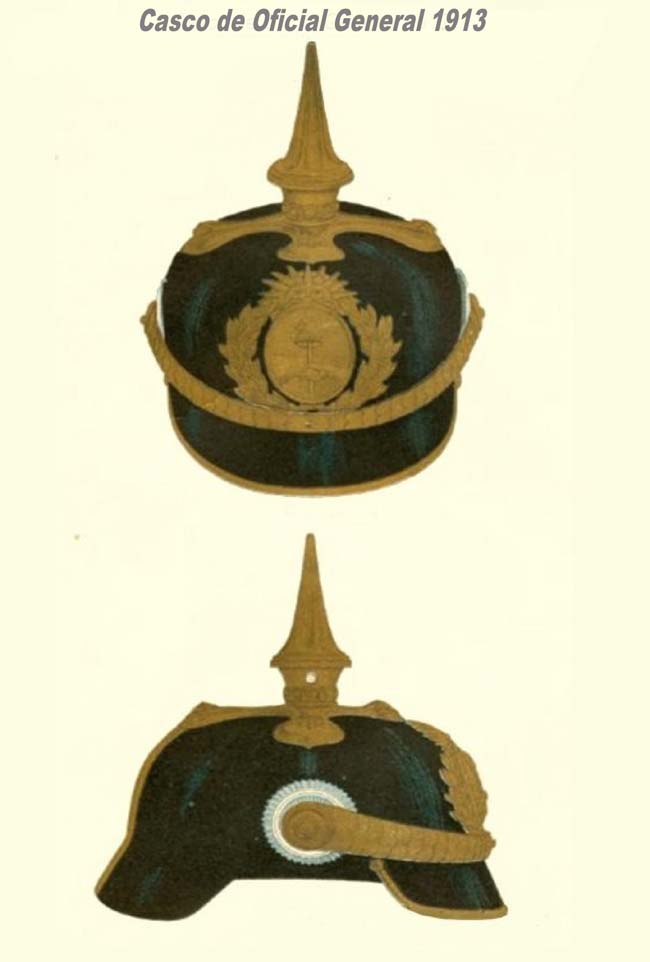
Cruciform spike base and fluted spike for Argentinean General’s helmets. Illustration: ”Reglamento de Uniformes Militares de Argentina, de 1912”
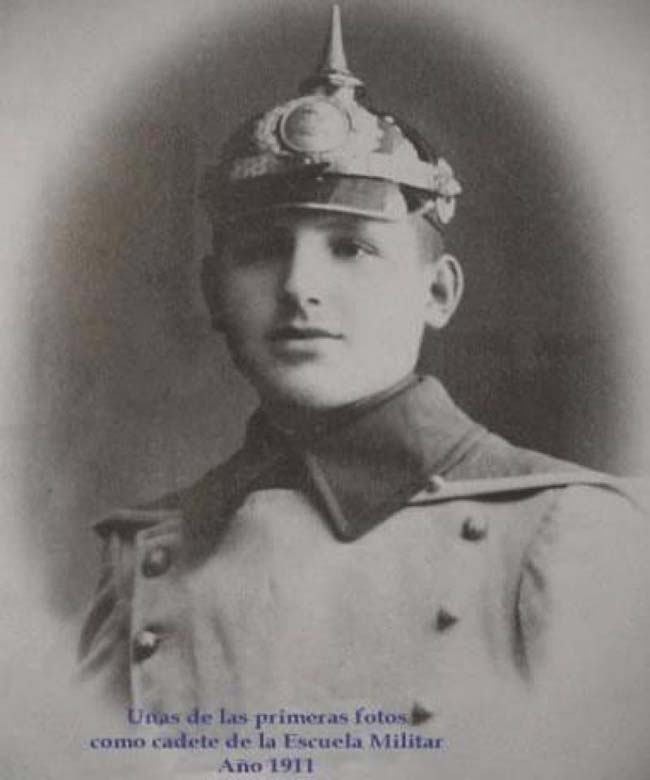
Cadet Juan Domingo Perón, 1911.
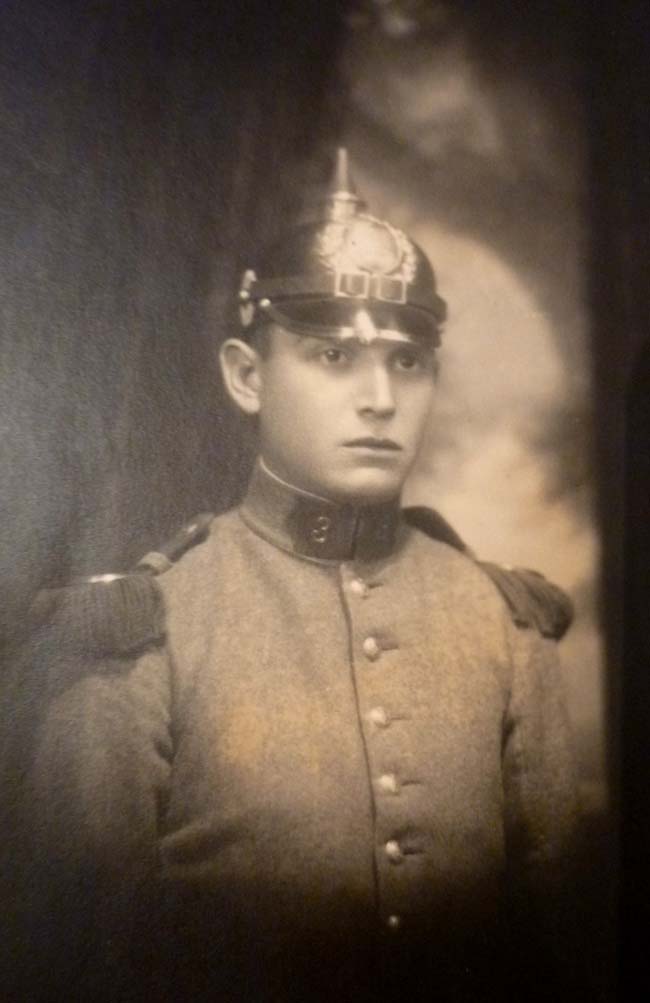
Infantryman of the 3rd Infantry Regiment, wearing his Model 1910 pickelhaube (with leather chinstrap).Coll. Raúl Yáñez M.
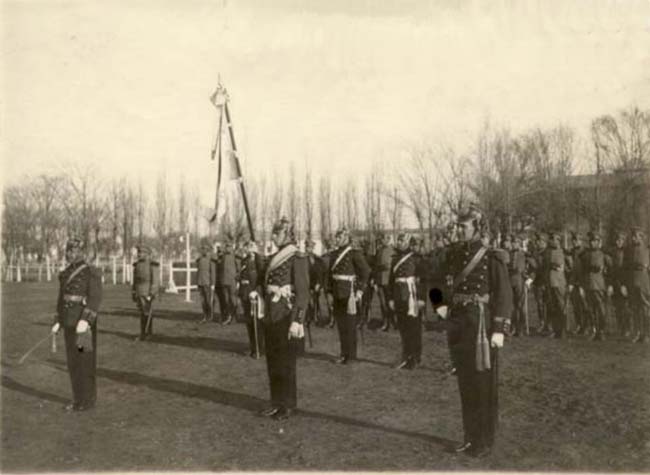
Uniforms of French influence with German pickelhauben. From : “Evolución de los Uniformes Militares Argentinos” by Major (Argentinean army) Sergio O. H. Toyos
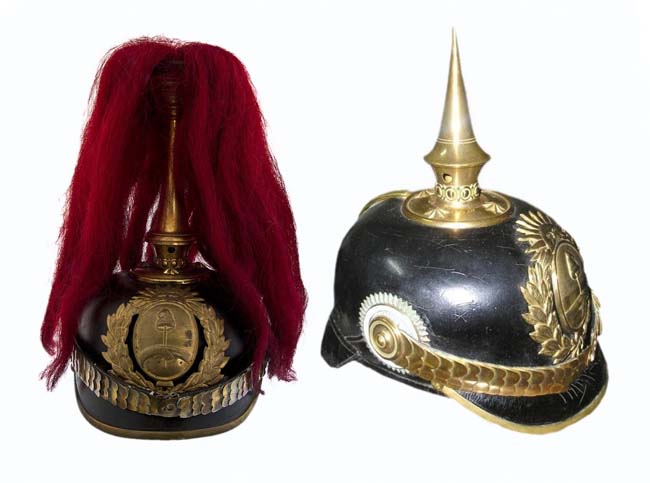
Cavalry Officer’s helmet with round base and plain spike, 1910-1924. Coll. Wilson History and Research Center.
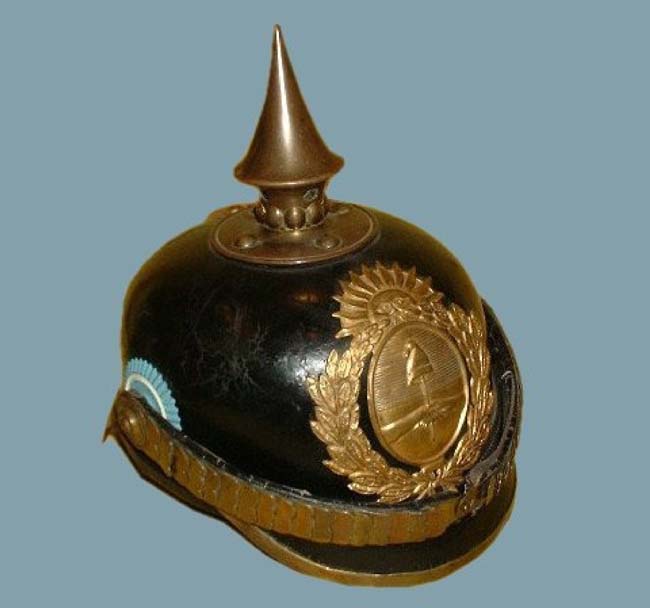
Argentinean Non-Commissioned officers ( NCO) Spiked Helmet, 1910
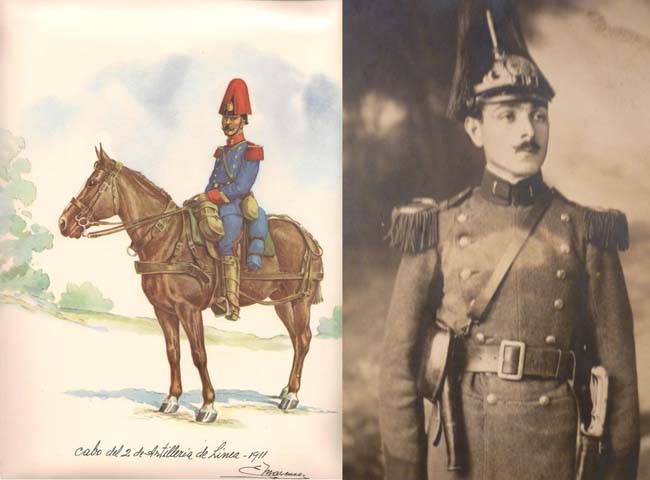
Left: Corporal of the 2nd Line Artillery Regiment, 1911. Illustration: Eleodoro Marenco, 1966. Right: Officer of the 1st Line Artillery Regiment, 1912. Coll. Raúl Yáñez M.
BOLIVIAN PICKELHAUBE
1912- Present-Day
The Bolivian Army adopted the spike helmet for its Armed Forces including the Military Academy in 1912 (Uniforms Regulation of May 10, 1912), with the arrival of the first German advisory mission to the country. At present, the spike helmet is part of the uniform of the students of the Military Academy "Colonel Gualberto Villaroel" and the Bolivian Police Academy (Anapol). Likewise, many High School marching bands use this helmet in their presentations.

Bolivian Police Academy (Anapol) , with avocado hairbush.
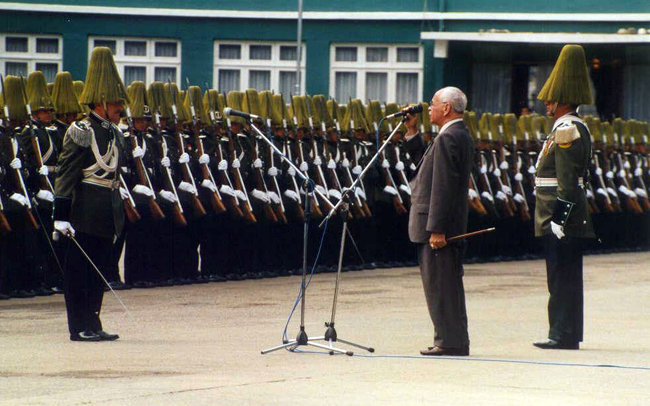
Bolivian Police Academy: “Academia Nacional de Policia “(Anapol).
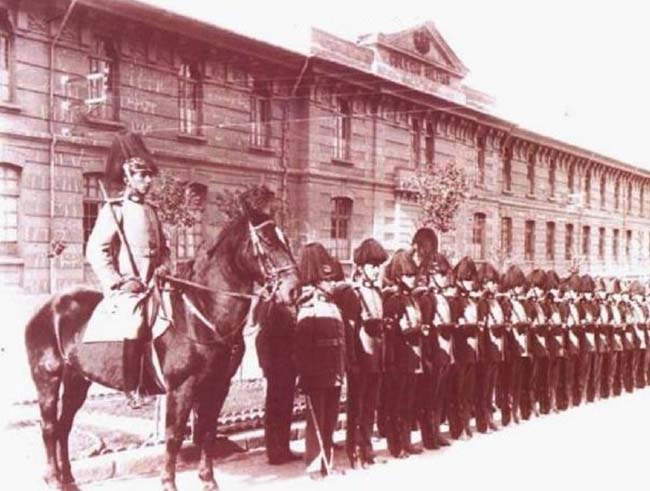
Officers and troops, on parade formation.
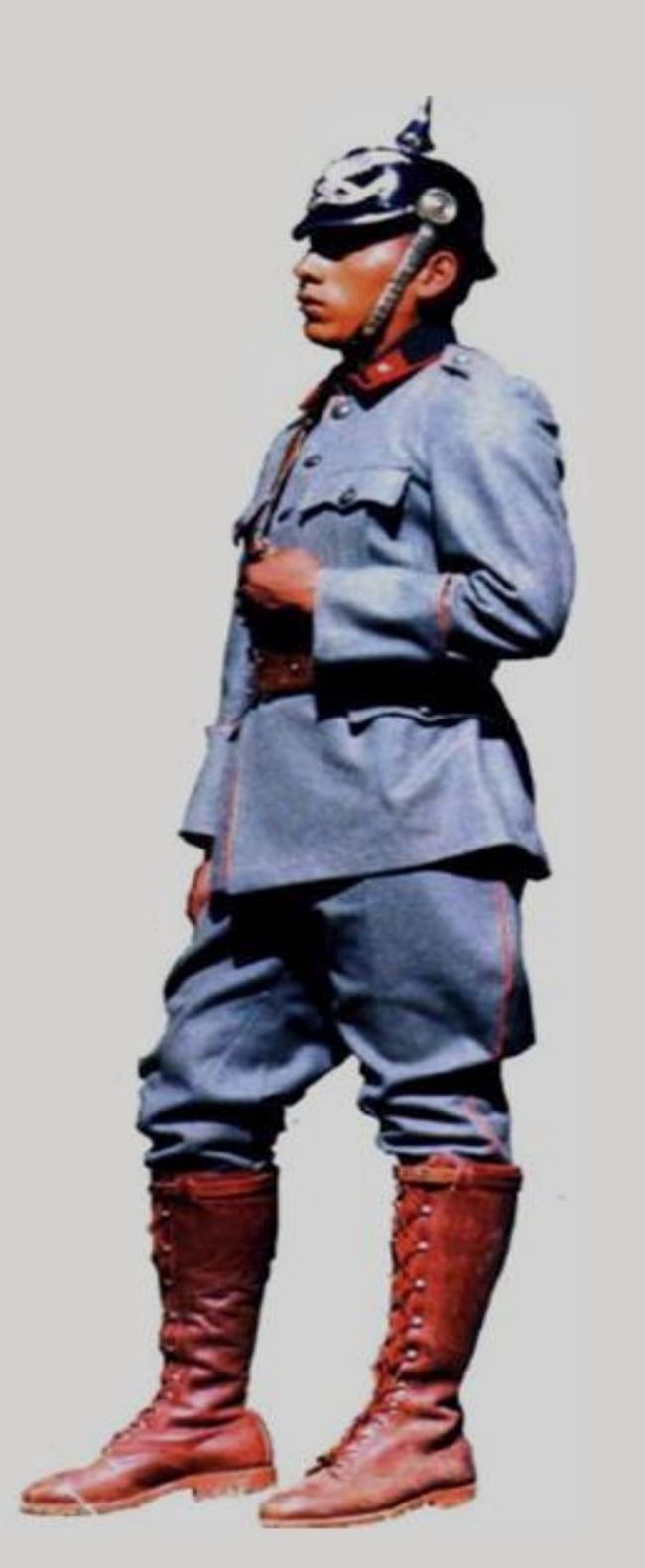
Bolivian soldier, Ca. 1930.

Officers and troopers, on Presidential Escort. 2010. Foto: Venemil.
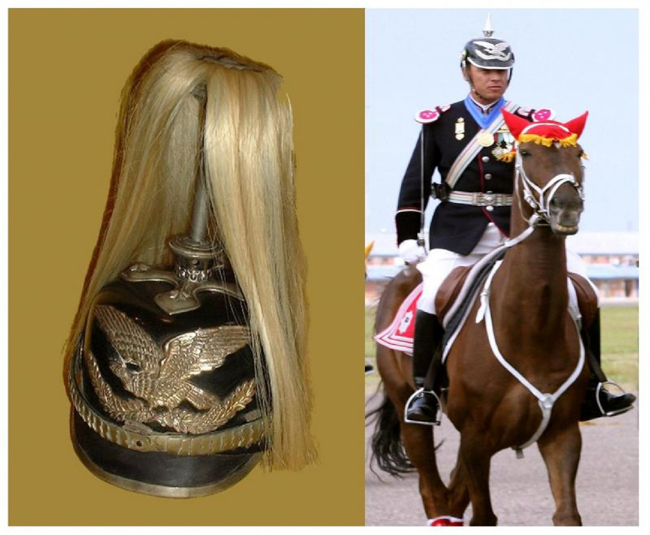
Helmet of the Bolivian Military Academy “Colonel Gualberto Villaroell“. Made by WKC ( Weyersberg, Kirschbaum & Cie., Solingen, Germany )
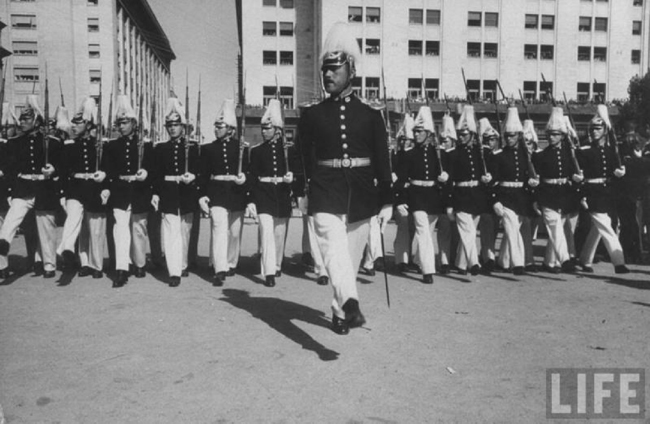
Bolivian Military Academy. Ca. 1950
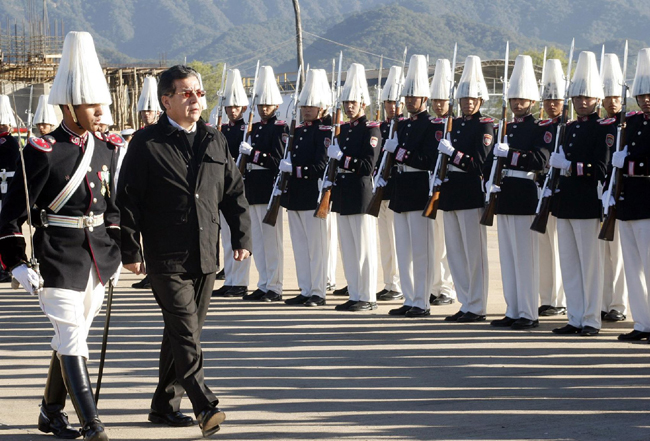
Bolivian Military Academy “Colonel Gualberto Villaroel“.
http://www.youtube.com/watch?v=A2Lf_L_h9HY&feature=related
High School marching bands
http://www.youtube.com/watch?v=3SR5BCczTtI&feature=feedf_more
BRAZILIAN PICKELHAUBE
1889 - 1928
Their use began in 1889, with some distinctive modifications in 1890 and 1894. The Brazilian helmets show a Portuguese heritage with the style of the front badge, accessories and decorations; their uniforms, are a very interesting blend of French, British and German military fashion. 1903 was the final year for the Brazilian Army spike helmets. They were in use with Police Corps and Firemen until the year 1928.
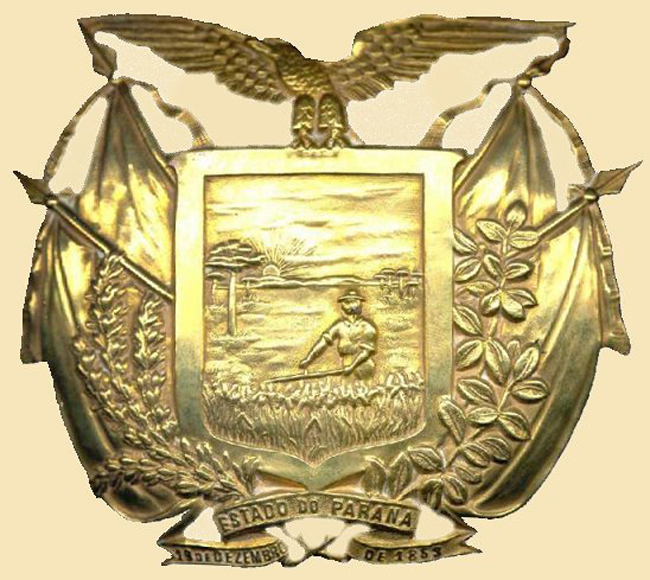
Old helmet plate of the Military Police of Paraná, “Regimento de Segurança”, 1913
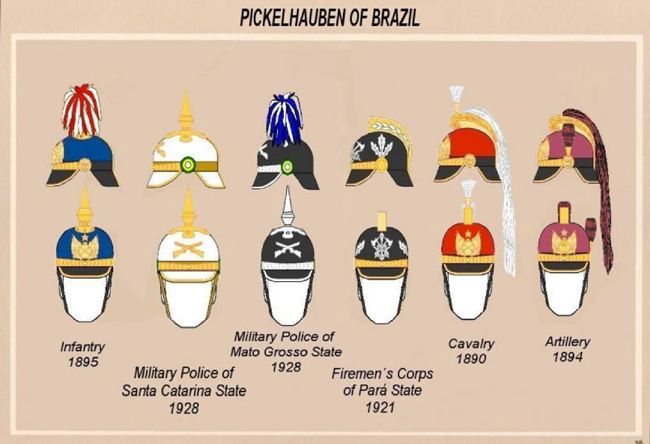
Assorted models used by Brazil. Wikipedia (Guilman).
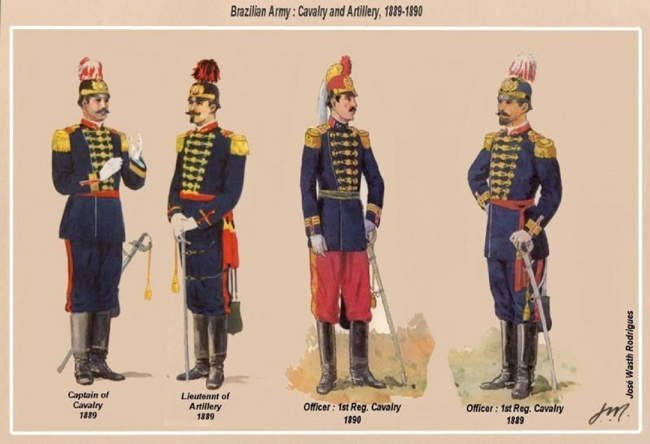
Officers of the Brazilian Army, between 1889 and 1890. Illustration: José Wasth Rodrigues.
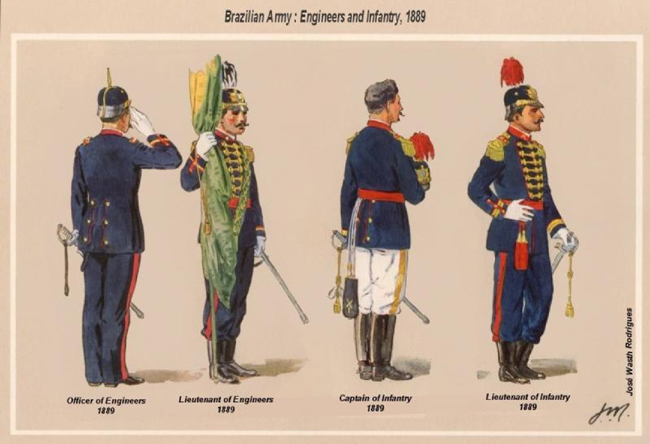
Officers of the Brazilian Army, 1889. Illustration: José Wasth Rodrigues.
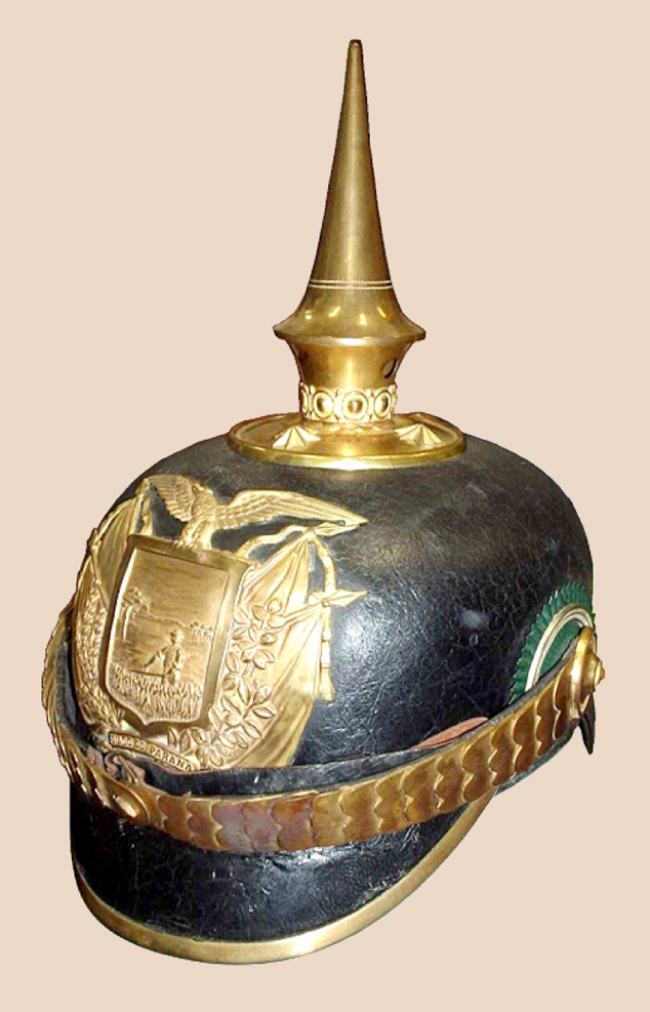
Pickelhaube of Military Police of Paraná State, Brazil, 1913-1917. Picture : Wikipedia ( Portuguese )
COLOMBIAN SPIKE HELMETS
1907 – Present-Day
The use of the pickelhaube, begins with the great restructuring of the Colombian Armed Forces of 1907. At that time a Chilean military mission imposed the use of the Prussian spike helmets, that has survived until the present. In Colombia, the spike helmet enhances the presentations and parade of the Military Academy, Guard Battalion of the Presidency (Presidential bodyguard), the Police Cadets School and some High School marching bands.

Military Academy (Escuela Militar de Cadetes) “General José María Córdova“ founded on April 13, 1907 (Decree Law N° 434).
http://www.youtube.com/watch?v=T4M9Z1ZuUdY
http://www.youtube.com/watch?v=fBIFQuCuIBI&feature=youtube_gdata_player
Military Academy Band, playing an old Chilean march : “ Adiós al 7° de Línea” ( Good-bye to the 7th of line )
http://www.youtube.com/watch?v=69v_EqZTjiA&feature=youtube_gdata_player
The Chilean original version.
http://www.youtube.com/watch?v=dsHVaWxAXUQ&feature=youtube_gdata_player

Cadets belonging to the Colombian Military Academy.

Guard Battalion of the Presidency (“Rondón” Cavalry Company), created on August 16, 1928.
http://www.youtube.com/watch?v=0u1bM3wJADc

Guard Battalion of the Presidency (Infantry Company” Córdova”).

Cadets and Officer of the Police Academy " General Francisco de Paula Santander".
Parade in a rural area :
http://www.youtube.com/watch?v=RYm7ItG3HYk
High School Marching Band, playing an old Chilean march : “ Adiós al 7° de Línea” ( Good-bye to the 7th of line )
http://www.youtube.com/watch?v=0Mf4IESY8vI&feature=feedf
ECUADORIAN SPIKE HELMETS
1907 – Present-Day
A Chilean military mission begun the adoption of the Prussian instruction and uniforms for the Army of Ecuador in 1903. The Regulation of January 10, 1907, made it standard for the Army and the Military Academy. The cadets of the Ecuadorian Military Academy “Eloy Alfaro" has kept this tradition until today. The current helmets are made of fiber and they possess two lateral vents on each side.

Military Academy Cadets from "Eloy Alfaro" Military Academy. Picture taken in 1911.

Cadets carrying the pennant from the "Eloy Alfaro" Military Academy, with yellow hairbush.

Front badge of Ecuadorian Prussian helmets.

Fiber helmet of the Ecuadorian Military Academy. Note the lateral vents.

The“Great Parade” fiber helmets, used by the “Eloy Alfaro” Military Academy Senior Officers. The Staff officer graduates use golden condor helmets (Left), the officers without title (General Staff), use helmets with silver color condor (right). Ecuadorian Army Uniforms Regulation 2007, article 50.

Helmet from Ecuador, this one is different to the above samples and it is similar to the 1848 original model. Sent by Eduardo Espinoza
http://www.youtube.com/watch?v=vXSZXWuVJh4
http://www.youtube.com/watch?v=Kq8cA6zu_70&feature=youtube_gdata_player
EL SALVADOR SPIKE HELMETS
1901 - 1927
In 1890 a German Military mission was hired by the Salvadorian Army, being reinforced later by a Chilean military mission, which operated in the country from 1903 to 1909 and from 1951 to 1957. The Prussians helmets are a sample of this influence.

Front badge of spike helmets of El Salvador.

M/1895 Prussians helmets, in the “Museo de Historia Militar” of El Salvador. Picture: Mr. Carlos Rodriguez Mata

A group of Cadets from the Military Academy, in front of the "Palacio Nacional", City of San Salvador, El Salvador, 1924. Picture: Mr. Carlos Rodriguez Mata.
HONDURAN SPIKE HELMETS
1904 – 1912
The Military Academy of the Army of Honduras was organized in August 31, 1904 (Law Decree Nr. 56), by the Chilean Captain Luis Oyarzún, which introduced the use of the pickelhaube among the Officers of the Army.
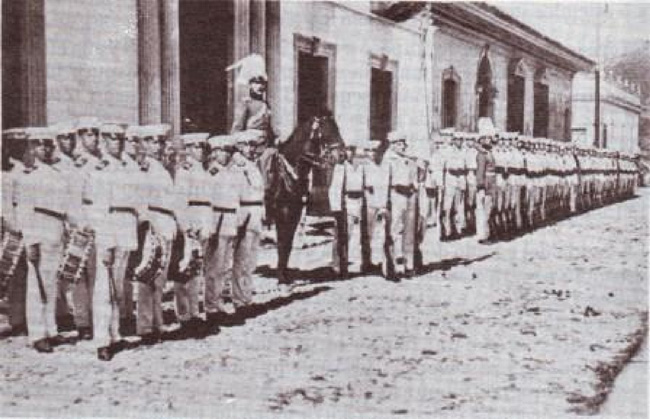
General Abel Villacorta, 1908. Picture : “Dirección de Historia Militar, de las Fuerzas Armadas de Honduras”
MEXICAN SPIKE HELMETS
1905 – 1910.
The Mexican pickelhauben had a very brief existence. It was born under the Porfirio Diaz Presidency, and the Uniform Regulation of 1905. It was a curious mixture of German, French and British military fashion, and was made obsolete by the Mexican Revolution in 1910. Nevertheless it was only eliminated by the Uniform Regulation of Sept. 1919, and it persisted in some Military Schools until the mid-1920's (for example, in the Infantry School). It was only employed by Officers of higher grade, the Cadets of the Military Academy, and the Military Schools, that is the reason why the scarce helmets that exist today are of extraordinary quality.

Picture from the Centennial of Mexico. Officer Porfirio Díaz Jr., Mrs. Carmen Romero Rubio and General Porfirio Díaz (in civil attire). Sept.01, 1910. Picture: “Seis Siglos de Historia Gráfica de México 1325-1976”, Gustavo Casasola.

Cadets of the Military Academy, September 16, 1910. Picture: “Seis Siglos de Historia Gráfica de México 1325-1976”, Gustavo Casasola.

Military Academy, September 8, 1910. Picture: Gustavo Casasola, “Seis Siglos de Historia Gráfica de México 1325-1976”.

Cavalry Captain´s helmet, 1910. Coll. Juan Matos, Mexico.

Gen. Gonzalo Acosta Mason helmet (Historical.Ha.com).

Cavalry General helmet, with parade plume, 1910. This helmet was Auctioned on September 07, 2010, by the House Louis C. Morton, in USD$ 11,556.
NICARAGUAN SPIKE HELMETS
1893 -1909.
The German influence was present in the Army from 1893, and it ended in 1909, with the anarchy and the subsequent American intervention in 1912.

Formation of the Military Polytechnic Academy of Nicaragua, 1901. The tallest Officer in the picture is the Engineer Camilo Castellón, Secretary of War, and the Officer at his right, is the Colonel Kart Uebersesig, German Instructor and Director of this Academy.
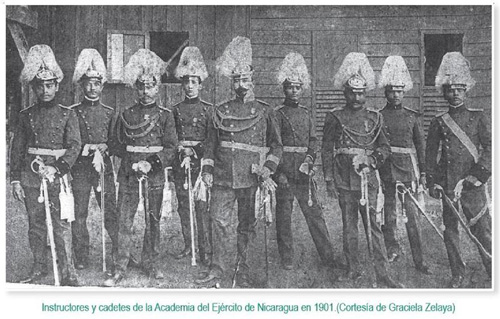
Instructors and Cadets of the Military Polytechnic Academy of the Army, (Mr. Castellón to the center, and the colonel Uebersesig to the right),Nicaragua, 1901.
PARAGUAYAN SPIKE HELMETS
1900 – 1930.
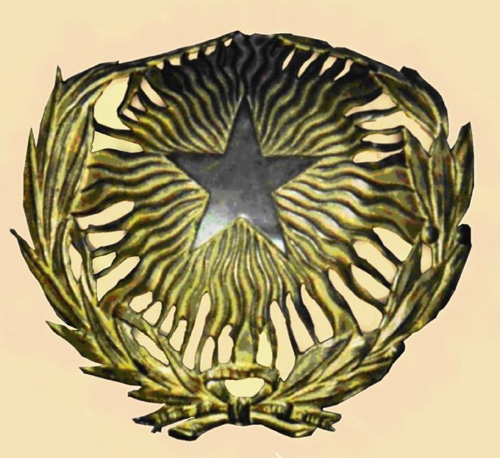
Front helmet plate of Paraguay
The Prussian helmet served in the Paraguayan Army since 1900, and with the advent of the French military missions in the late 20s that changed the organization and the equipment of the Army, they definitively disappeared from its inventory.
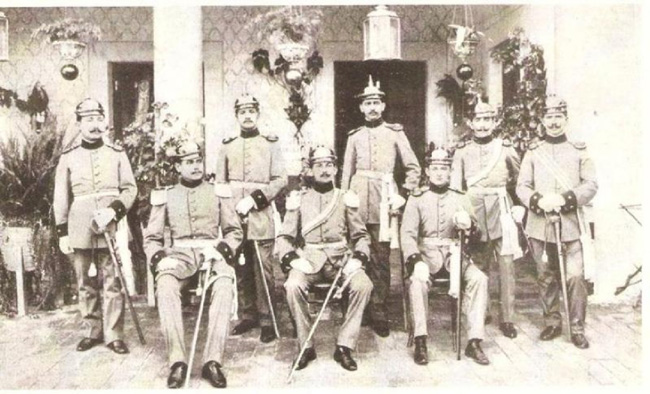
Paraguayan Officers. Ca. 1928. Coll. Ernesto Sosa.
PERUVIAN SPIKE HELMETS
1872-1880.
They were used from 1872, and until the defeat of the army, in 1880. The army began to use it since the Uniforms Regulation of 1872, in the parade and daily uniforms. It is know to have been used, at least, by 2nd Cavalry Regiment " Lanceros of Torata”, the 1st Line Infantry Battalion " Pichincha” , and an Artillery regiment or battalion.
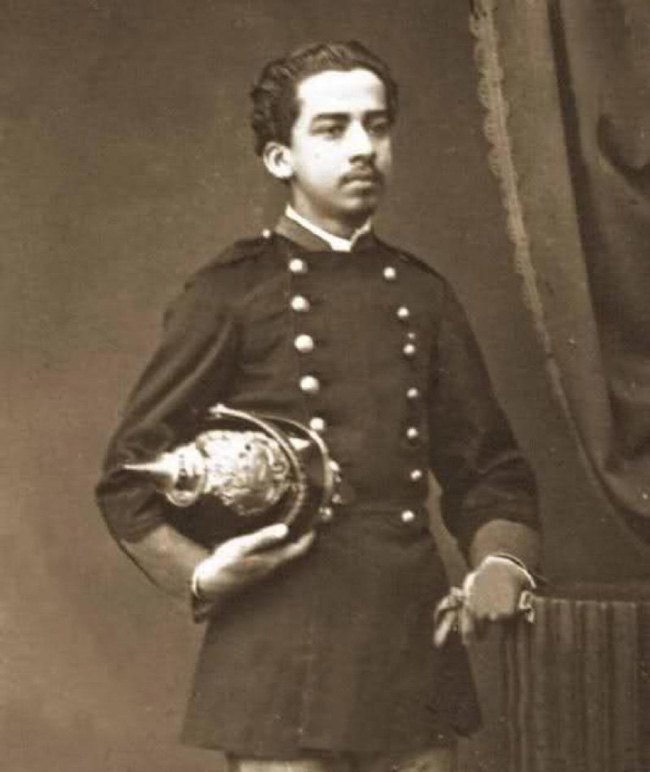
Wonderful picture of an Artillery Lieutenant of junior grade ( Alférez ), in daily uniform, Lima, 1879. The Picture is from the book: “La Guerra de Nuestra Memoria, Crónica Ilustrada de la Guerra del Pacífico”, by Renzo Babilonia Fernández Baca, January 2009, Peru.

Cavalryman of the 2nd Cavalry Regiment. "Lanceros of Torata" (1872) Ilustration: “Evolución Histórica de los Uniformes del Ejército del Perú (1821-1980)”, Peruvian Army, Dic.2005.
URUGUAYAN SPIKE HELMETS
1924 -1932.

Coat-of-Arms of Uruguay
The Country possesses a strong French tradition in its Armed Forces, however between 1924 and 1932, the “Guardia Republicana” (Mounted anti-riot Police), used a type of spike helmet similar to the M/1895 model, with its corresponding hairbush and the national Coat-of-Arms.

Spike helmet of the Republican Guards (Mounted Anti-Riot Police). Coll. Carlosraul187, MercadoLibre Uruguay.
VENEZUELAN SPIKE HELMETS
1918 – 1945 and 1971 till Present-Day
The pickelhaube appeared with the reorganization impelled by the Chilean military mission from 1910 on, that brings to the Army the characteristic view of the Prussian pattern. In 1918, the Military Academy of Venezuela, adopted the spike helmet that remained in use until 1945 (in 1936, it changed from black color to turquoise). However, it reappeared on June 24th, 1981, and on 2007, the National Shield was changed, to the new Bolivarian Coat-of-Arms. Starting in September 2010, different colors of hairbush were adopted for the different levels of the Academy Cadets. The Air Force Academy adopted between 1982 and 1986 a strange model of pickelhaube that had a short period of use.

Cadets of the “Escuela Militar” of Venezuela, 1918. Picture: Foro Militar de Venezuela.

Cadets of the “Escuela Militar” of Venezuela, period 1936-1945. Picture: Foro Militar de Venezuela.

Cadets of the “Academia Militar” – Military Academy- of Venezuela, current – 2nd year academic level -.(Former “Escuela Militar” to 1998)
http://www.youtube.com/watch?v=e7s1D1IjbcM

Parade plume colors, for each academic level of the Venezuelan Military Academy ( Since 2007 )

Cadet of the Military Academy, in parade uniform (3rd Year)

Spike helmet from the “Escuela Militar de Venezuela”, prior to 1936. Coll. Raúl Yáñez M.

Helmet Plate from Venezuela, previous to 2007

Current helmet of the Venezuela Military Academy, with the new Bolivarian front badge.Note the horse facing left and compare with the previous badge. The change took place in 2007.

Cadet of the Air Force Academy (FAV), with their peculiar helmet, used from 1982 to 1986.
Bibliography :
1.- “Les Coiffures Prussiennes de l´Armée Chilienne”, Gazette des Uniformes, Nr. 204, Sept. 2002, by Jean – Manuel Torti
2.- “L´Armée Chilianne Prussianisse”, Gazette des Uniformes, Nr. 154, by Juan Angel Torti
3.- “Historia del Ejército de Chile: Nuestros Uniformes”, Tomo XI, 1985, EMGE.
4.- “Cuatro Siglos de Uniformes en Chile", by Antonio & Alberto Márquez Allison, Library of Congress UC485.C5M37 1976.
5.- Abstract: “La Escuela Militar y el casco Prusiano, Antecedentes Históricos”, by Colonel Alberto Márquez A., Chilean Army
6.- “The Kaiser’s Army in Color, 1890-1910”, C. Woolley
7.- “Memorial del Estado Mayor del Ejército de Chile”, Feb. 1913. Chilean Army magazine
8.- “Retrato: Los Héroes olvidados de la Guerra del Pacífico”, M. Pelayo, C. Arce, E. Gardella, Santiago, 2007.ISBN: 9562845826
9.- “Uniformes de la Guerra del Pacífico: Las Campañas terrestres 1879-1884”, Greve y Fernández. ISBN: 978-1-85818-582-8
10.- Abstract “Información sobre el casco de la Academia Militar de Venezuela (A.M.V.), by Eddie Ramirez
11.-“Seis Siglos de Historia Gráfica de México 1325-1976”. Gustavo Casasola.
12.-“La Guerra de Nuestra Memoria, Crónica Ilustrada de la Guerra del Pacífico”, by Renzo B. Fernández Baca, Peru, January 2009.
13.-Abstract “Evolución de los Uniformes Militares Argentinos” by Major Sergio O. H. Toyos, Argentinean Army.
14.- “Armed Forces of Latin America”, by Adrian J. English/Jane’s Publishing Co., 1984, ISBN 0710603215
15.- “La influencia del Ejército chileno en América Latina 1900-1950”, by Roberto Arancibia Clavel, CESIM, Santiago, 2002. ISSN 0717-7194
16.- “Evolución Histórica de los Uniformes del Ejército del Perú (1821-1980), Peruvian Army, Dic. 2005.
|















